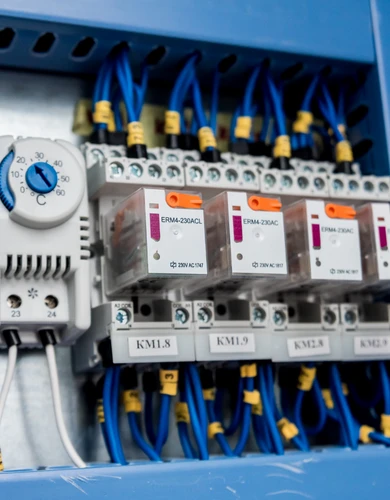A guide to Streamlined Energy and Carbon Reporting (SECR)
Streamlined Energy and Carbon Reporting (SECR) requires large UK businesses to disclose their energy use and emissions in their public annual reports.
Approximately 12,000 businesses submit this disclosure each year, enhancing transparency around corporate energy consumption and carbon emissions. If your business is tackling SECR for the first time, the rules may seem complex. This guide breaks down the requirements step by step, helping you calculate and prepare a compliant disclosure with ease.
Here’s what we cover:
- Why was SECR introduced?
- Who needs to comply with SECR?
- What must be reported under SECR?
- Example SECR disclosure
- How to calculate and report SECR data
Why was SECR introduced?
The SECR framework was introduced by the UK government in 2019 to simplify the rules and requirements for carbon reporting among large businesses.
The SECR scheme shifted emission reporting requirements from a separate submission to the Environment Agency to a straightforward additional disclosure in the Directors’ Report section of published annual accounts.
The minimum SECR requirements for large private companies are straightforward and can usually be handled by an in-house finance team.
Including SECR figures in public annual reports has increased the visibility of carbon emissions to shareholders, investors, and the public, motivating organisations to enhance their energy efficiency.
Who needs to comply with SECR?
SECR rules apply to public companies and any private companies that meet at least two of the following criteria:
- Turnover of more than £36 million.
- Balance sheet totals more than £18 million.
- Number of employees exceeding 250.
The criteria above apply to individual private limited companies, partnerships, and groups of companies.
When can a business be exempt from reporting?
There are three exemptions that allow businesses meeting the above criteria to be excluded from SECR disclosure requirements:
- Subsidiary exemption: Individual subsidiaries within a group are not obliged to report if the parent entity is reporting.
- Low energy usage: If a company has consumed less than 40,000 kWh of energy in the reporting year.
- Prejudicial disclosure: If the directors believe that reporting would seriously prejudice the interests of the business.
In each case, using these exemptions must be disclosed in the Directors’ Report.
What happens if you don’t comply?
The SECR disclosure is included within the audited annual report of large companies.
An external auditor will not typically audit the details of your SECR calculation but will check that you have prepared a disclosure meeting the minimum requirements.
An auditor should refuse to sign an annual report that is missing a SECR disclosure, which would prevent your company from filing its accounts with Companies House.
Late filing of annual reports results in a rising series of fines depending on the length of the delay. Failure to file accounts is a criminal offence under the Companies Act, which can lead to director prosecutions and the striking off of the relevant business.
What must be reported under SECR?
The SECR rules prescribe a set of minimum disclosures required in the Directors’ Report section of a company’s annual public accounts.
It is common practice to go beyond the minimum disclosures to highlight broader steps the company is taking to improve its green credentials.
The section below summarises the five key minimum requirements for large private companies.
💡 The disclosure requirements for public companies are more extensive. We recommend consulting your accounting firm for detailed guidance on public company reporting requirements.
1. Emissions from transport
Emissions resulting from activities for which the company is responsible, involving the combustion of petrol or diesel for transport, measured in carbon dioxide equivalent (CO₂e).
2. Emissions from the purchase of energy
Emissions measured in tonnes of carbon dioxide equivalent (CO₂e) resulting from the company’s purchase of electricity and gas for its own use.
3. Total energy consumption
A figure in kWh representing the total annual energy consumption from transportation and purchased energy.
4. Emissions intensity ratio
A ratio that represents the company’s annual emissions from two sources: (1) transport emissions and (2) purchased energy emissions, in relation to a measurable factor linked to the company’s activities.
5. Calculation methods
A description of the methodology used to calculate the above emissions and energy consumption figures.
Example SECR disclosure
To help demonstrate these SECR disclosure rules, here is an example of a minimum disclosure for a large private company.
Environmental matters
The Company recognises the environmental impact of its energy usage and looks to reduce consumption where possible.
In the year, the electricity and gas purchases of the company in the UK contributed 42,000 kilograms of CO2e (2023: 31,000 kg) of emissions relating to the purchase of power and gas for its office.
In the year, the combustion of fuel for transportation in the UK contributed 100,000 kilograms of CO2e (2023: 85,000 kg) to a company vehicle fleet.
The total energy consumption from transportation and energy usage in the UK was 210,000 kWh (2023: 168,000 kWh).
The carbon intensity measure of kilograms of CO2e per full time equivalent employee was 7,700 (2023: 8,100).
We used the Department for Energy Security and Net Zero’s published greenhouse gas emissions conversion factors in our calculations.
How to calculate and report SECR data
This section provides practical guidance on collecting and calculating data for SECR to meet the minimum disclosure requirements for large private companies.
Collecting fuel consumption data
The easiest way to calculate emissions from fuel consumption is to use the total number of litres of petrol or diesel purchased in the year and apply a conversion rate to determine the emissions figure.
Here are the three best sources of fuel consumption data:
- Invoices from your petrol and diesel providers.
- Annual summaries from fuel card providers.
- Reports from fleet management systems.
💡 Most companies do not include employee mileage claims in their mandatory SECR disclosure, as this is typically considered a Scope 3 indirect value chain emission.
Collecting energy emissions data
The easiest way to calculate emissions from energy consumption is to use the total number of kWh of electricity and gas consumed in the year and apply a conversion rate to determine the emissions figure.
Here are the best sources of information for calculating your annual business energy consumption:
- Use a business energy monitoring software system that already records consumption at your business.
- Use the online portal of your commercial electricity and business gas suppliers to download energy usage reports.
- Add up the figures from all business electricity bills and business gas bills received during the year.
- Use figures from the energy management system operated by larger facilities teams.
- Use energy meter readings from business electricity meters and commercial gas meters at your properties.
Choosing an intensity ratio
SECR disclosure requirements allow companies to choose an energy intensity ratio most relevant to their activities. The Energy Savings Opportunity Scheme (ESOS) also requires the selection of an energy intensity ratio. We recommend using the same ratio to reduce the work required to comply with both schemes.
For more information, read our guidance on selecting energy intensity ratios for ESOS.
Conversion rates tables
The Department for Energy Security and Net Zero publishes annual conversion factors to enable businesses to calculate their emissions from energy consumption and fuel purchases easily.
Here’s a summary of the most commonly used conversion factors necessary for SECR disclosure:
| Year | Activity | CO2e | kWh |
|---|---|---|---|
| 2024 | kWh of electricity consumed | 0.21 | 1.00 |
| 2024 | Litres of forecourt petrol | 2.08 | 0.23 |
| 2024 | Litres of forecourt diesel | 2.51 | 0.25 |
These figures change each year, so we recommend using the latest figures on the Gov.uk Greenhouse gas emissions conversion factors page.
💡 Most companies use these conversion figures to report carbon emissions associated with green business energy tariffs. This is because, in the delivery of a green business electricity tariff, the power supplied by the grid comes from a mix of sources, including gas power stations, and therefore has a carbon footprint.
Support for SECR compliance
Many companies use external support to assist with their Streamlined Energy and Carbon Reporting (SECR), as well as their ESOS compliance and wider environmental strategies.
Here’s a list of the best places to get support:
Professional services
Professional services firms are increasingly offering support to large organisations transitioning to net zero.
Their services encompass developing carbon strategies, setting targets, and establishing emission reporting processes for businesses.
These services typically go above and beyond the minimum SECR reporting requirements but enable businesses to use mandatory environmental disclosures to demonstrate their commitment to sustainable business practices.
Carbon accounting software
Several software solutions help automate SECR data collection and convert energy use into CO₂e emissions.
These cloud-based platforms can automatically generate SECR-compliant reports and audit documentation for businesses.
Business energy suppliers
Business energy suppliers can assist with SECR disclosure preparation since commercial gas and business electricity prices are based on energy consumption metrics.
The best business energy suppliers offer the following support:
- Annual energy consumption reports
- Carbon footprint reports or calculators
- Business energy efficiency tips and best practices
At Business Energy Deals, we specialise in helping businesses find better electricity and gas tariffs. Use our business energy comparison service today to see how much you can save.

